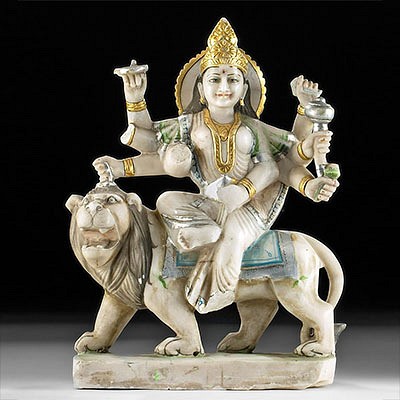Persian Achaemenid Silver Phiale w/ Face
Lot 59
About Seller
Artemis Gallery
686 S Taylor Ave, Ste 106
Louisville, CO 80027
United States
Selling antiquities, ancient and ethnographic art online since 1993, Artemis Gallery specializes in Classical Antiquities (Egyptian, Greek, Roman, Near Eastern), Asian, Pre-Columbian, African / Tribal / Oceanographic art. Our extensive inventory includes pottery, stone, metal, wood, glass and textil...Read more
Categories
Estimate:
$1,400 - $2,100
Absentee vs Live bid
Two ways to bid:
- Leave a max absentee bid and the platform will bid on your behalf up to your maximum bid during the live auction.
- Bid live during the auction and your bids will be submitted real-time to the auctioneer.
Bid Increments
| Price | Bid Increment |
|---|---|
| $0 | $25 |
| $300 | $50 |
| $1,000 | $100 |
| $2,000 | $250 |
| $5,000 | $500 |
| $10,000 | $1,000 |
| $20,000 | $2,500 |
| $50,000 | $5,000 |
| $100,000 | $10,000 |
| $200,000 | $20,000 |
About Auction
By Artemis Gallery
Jul 16, 2020
Set Reminder
2020-07-16 10:00:00
2020-07-16 10:00:00
America/New_York
Bidsquare
Bidsquare : Ancient / Ethnographic Art Through The Ages
https://www.bidsquare.com/auctions/artemis-gallery/ancient-ethnographic-art-through-the-ages-5334
Ancient art from Egypt, Greece, Italy and the Near East, as well as Asian, Fossils, Pre-Columbian, Native American, African / Tribal / Oceanic, Spanish Colonial, Russian Icons, Fine art, much more! Artemis Gallery info@artemisgallery.com
Ancient art from Egypt, Greece, Italy and the Near East, as well as Asian, Fossils, Pre-Columbian, Native American, African / Tribal / Oceanic, Spanish Colonial, Russian Icons, Fine art, much more! Artemis Gallery info@artemisgallery.com
- Lot Description
Ancient Near East, Achaemenid Persian Empire, ca. 500 to 330 BCE. A 90% silver phiale, a special libation bowl used for holding wine, with a hollow, rounded, raised boss, known as an omphalos, in the center. The omphalos is thought to have symbolized the navel of the earth, the central point of power that all things revolved around. Fascinatingly, this omphalos features the relief face of a distinguished looking man with heavy eyebrows and thick, curling hair that frames his face. The lower part of the bowl features a raised, cross-like form around the face. Above that is a corseted neck that then flares outward into a wide, smooth mouth with an unpronounced rim. Size: 6.25" W x 1.6" H (15.9 cm x 4.1 cm); silver is 90%; total weight: 138.1 grams
Libation bowls, known as phiale, were used across a wide geographical area - from Greece to Tibet, throughout the ancient Near East and Central Asia. These shallow bowls for holding wine in ritual and ceremonial settings were made from many materials - glass, ceramic, and many kinds of metal. Royal vessels were made of precious metals, like this one. They functioned both as tableware and as wealth - they could be stored in the royal treasury or given as gifts to people they were hoping to influence.
Provenance: ex-private Downingtown, Pennsylvania, USA estate collection, before 1980
All items legal to buy/sell under U.S. Statute covering cultural patrimony Code 2600, CHAPTER 14, and are guaranteed to be as described or your money back.
A Certificate of Authenticity will accompany all winning bids.
We ship worldwide and handle all shipping in-house for your convenience.
#150977The bowl has been expertly restored with approximately 75% original material, including the face omphalos. The restoration is well done and unobtrusive. Dark patina on surface that does not obscure the facial motif.Condition
- Shipping Info
-
All shipping is handled in-house for your convenience. Your invoice from Artemis Gallery will include shipping calculation instructions. If in doubt, please inquire BEFORE bidding for estimated shipping costs for individual items.
-
- Buyer's Premium



 EUR
EUR CAD
CAD AUD
AUD GBP
GBP MXN
MXN HKD
HKD CNY
CNY MYR
MYR SEK
SEK SGD
SGD CHF
CHF THB
THB

















